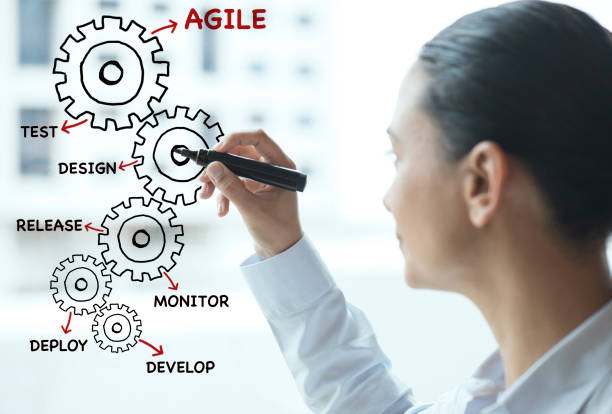Are you new to agile methodology but eager to learn more? This beginner’s guide for Agile with Scrum methodology is here to help. Scrum is an iterative and incremental framework used in software development, primarily used when requirements are changing or uncertain. Agile works by breaking down projects into smaller, manageable tasks that can be completed and evaluated quickly. This helps teams stay flexible and respond quickly to changes in the environment or customer needs. In this blog post, we’ll provide a comprehensive overview of Agile with Scrum methodology basics – what it is, how it works, who should use it, and why, plus tips on getting started. Let’s dive in!
What is Agile methodology?
Agile methodology is a project management approach that values customer collaboration, continuous delivery, and flexibility over process and documentation. The agile approach was first outlined in the Agile Manifesto, which was written in 2001 by a group of software developers who were frustrated with the traditional, waterfall approach to software development.
Since then, agile has become one of the most popular project management approaches in the world, and it is now used by businesses of all sizes across a wide range of industries. While there are many different types of agile methodology, the most commonly used method is scrum.
What is Scrum?
Scrum is a framework for Agile software development. It is designed to help teams work together to complete projects faster and with better quality. Scrum is based on the Agile principle of delivering working software early and often.
The key features of Scrum are:
- Sprints: A sprint is a time-boxed period of time during which a team works to complete a set amount of work. Sprints typically last two weeks, but they can be shorter or longer depending on the needs of the team.
- Product Backlog: The product backlog is a list of all the work that needs to be done on a project. It includes both essential features and nice-to-have features, and it is prioritized by the product owner.
- Scrum Master: The scrum master is responsible for ensuring that the team follows scrum rules and practices. They also help remove any obstacles that might stand in the way of the team’s success.
- Daily Stand-up: The daily stand-up is a short meeting held every day, in which each member of the team tells everyone else what they did yesterday, what they plan to do today, and if there are any impediments in their way.
- Sprint Review: At the end of each sprint, the team meets to review their progress and demo the work they’ve completed. This meeting gives stakeholders an opportunity to provide feedback and give direction for future work.
Advantages of Agile development
There are plenty of advantages that come with agile development. Perhaps the most significant advantage is that it allows for a much quicker delivery time than traditional methods. This is because agile developers focus on completing small chunks of work, rather than trying to complete the entire project at once.
Another advantage of agile development is that it promotes collaboration between team members. Since everyone is working on small pieces of the project at the same time, there is a greater need for communication and coordination. This can lead to a better understanding of the project as a whole and can help avoid potential problems down the road.
Finally, agile development tends to be more flexible than traditional methods. If something isn’t working or if there are changes that need to be made, it’s much easier to make them in an agile environment. This flexibility can be a big help when trying to rapidly develop a new product or service.
How to get started with Agile Development?
If you’re new to agile methodology testing and development, the Scrum methodology is a great place to start. Scrum is a framework that can be used for any size project, and it’s especially well-suited for projects that are likely to experience changes or uncertainty during development.
To get started with Scrum, you’ll need to gather a few things:
A product backlog: This is a list of all the features or requirements for your project. If you’re not sure what should go on the product backlog, think about what your users need or want from the product.
A scrum board: This is simply a way to visualize the work that needs to be done. You can use an online tool like Trello, or you can create a physical scrum board with sticky notes and index cards.
A Sprint planning meeting: This is a short meeting (usually no more than an hour) where you’ll discuss the goals for the upcoming sprint and decide which items from the product backlog will be completed during that time period.
Once you have these things in place, you’re ready to start your first sprint!
Conclusion
Scrum is an excellent choice for Agile teams looking to maximize the efficiency of their development cycles and ensure the highest quality product. We hope this beginner’s guide has helped you understand Scrum, how it works, and why it’s such a popular methodology among Agile teams. With its focus on teamwork, transparency, and collaboration, implementing Scrum into your team can help you get more done with less effort. Try out some of these tips and tricks to see how Scrum can make a difference for your team!

